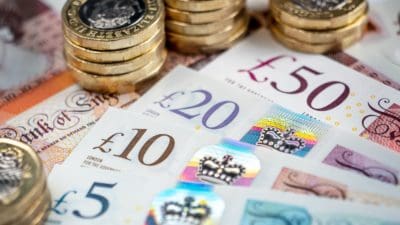One of the risks of being an income investor is that you may sometimes focus too heavily on historic yields, and miss out on opportunities for strong future growth.
Take BT Group (LSE: BT-A) (NYSE: BT.US), for example. The firm’s 2.9% prospective yield is slightly below the FTSE 100 average, but analysts expect BT’s dividend to increase by a further 14% in the 2014/15 financial year, which would take the firm’s yield to a more appealing 3.2% — plus any possible share price gains.
What will BT’s total return be?
Looking ahead, I need to know the expected total return (dividend plus share price growth) from BT shares, so that I can compare them to my benchmark, a FTSE 100 tracker.
The dividend discount model is a technique that’s widely used to value dividend-paying shares. A variation of this model also allows you to calculate the expected rate of return on a dividend paying share:
Total return = (Prospective dividend ÷ current share price) + expected dividend growth rate
Rather than guess at future growth rates, I usually average dividend growth between 2009 and the current year’s forecast payout, to provide a more reliable guide to the underlying trend. Here’s how this formula looks for BT:
(10.8 ÷ 378) + 0.107 = 0.136 x 100 =13.6 %
My model suggests that BT shares could deliver an annual total return of 13.6% over the next few years, comfortably outperforming the long-term average total return of 8% per year I’d expect from a FTSE 100 tracker.
Isn’t this too simple?
One limitation of this formula is that it doesn’t tell you whether a company can afford to keep paying and growing its dividend.
My preferred measure of dividend affordability is free cash flow — the cash that’s left after capital expenditure and tax costs.
Free cash flow is normally defined as operating cash flow – tax – capex.
BT’s 2013 accounts show that it generated free cash flow of £2.4bn in 2012/13, covering its £683m dividend payout by four times!
This lofty headroom suggests that BT has plenty of scope for further above-inflation dividend increases over the next few years, although it’s worth pointing out that the firm’s interest payment of £701m was larger than its dividend payout. If interest rates rise, BT — which has net debts of around £8.5bn — could be hit hard by additional repayment costs.







